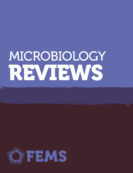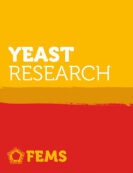FEMS Yeast Research Poster Prize: Anna Babour
29th International Conference of Yeast Genetics and Molecular Biology (ICYGMB2019)
FEMS Yeast Research awarded an Poster Presentation Prize at ICYGMB2019 to Anna Babour. A Virtual Special Issue of papers was also published for this conference. You can read an interview with Anna below.
Anna Babour
What is your current position and what was your scientific journey to get there?
I am currently a staff scientist at INSERM, the French National Institute for Health and Medical Research. As an undergrad and then a grad student, I was interested in biotechnologies and intended to join a biotech. In particular, I was fascinated by the idea of using microorganisms as factories for the production of industrially or medically relevant compounds.
Consistently, my PhD work aimed at investigating the protein quality control pathway of a non-pathogenic yeast (Yarrowia lipolytica) whose secretory pathway is close to that of humans and which can therefore be used for the bio-production of proteins of pharmaceutical interest.
My post-doc in the lab of Dr M. Niwa at UCSD led me to slightly reconsider my plans. The scientific environment I discovered there, made me want to dedicate my work to fundamental research. After a second post doc back in France, I obtained a lifetime position at INSERM.
For the last one and a half years I have been an independent group leader and developed my own research. My project focuses on the regulation of a crucial stress response pathway by using Saccharomyces cerevisiae as a model.”
Could you describe the research your poster covered?
The research we presented proposes the existence of a novel layer of regulation for the Unfolded Protein Response (UPR) – a conserved adaptive response to ER stress- that depends on a nuclear localized chromatin remodeler for which we previously reported a novel function in RNA metabolism.
We propose this chromatin remodeler as novel actor of the UPR that controls the subcellular localization of the mRNA that codes for the UPR transcription factor thereby affecting the termination of the response. Yet, in contrast to the initial phase of the UPR which has been extensively studied, little is known about the mechanisms that control its attenuation. Noteworthy, our data suggests a crucial role for Isw1 during the accurate attenuation of the UPR, which is known to be crucial to cell survival ”
What do you hope to focus your research on in the future?
While I think yeast is a fantastic model organism that enables the rapid dissection of complex mechanisms, I’m dreaming to explore the translational potential of my research in mammalian cells. In the near feature I wish to investigate to which extent our recent discoveries made in yeast play a crucial role in the mammalian system and tissue culture cells.
All but one of the FEMS journals are now fully open access (OA), with one journal, FEMS Microbiology Letters remaining a subscription journal with free-to-publish and OA options. Open access is key to supporting the FEMS mission of disseminating high quality research as widely as possible: when high quality, peer reviewed sound science is open access, anyone, anywhere in the world with an internet connection, can read it.







